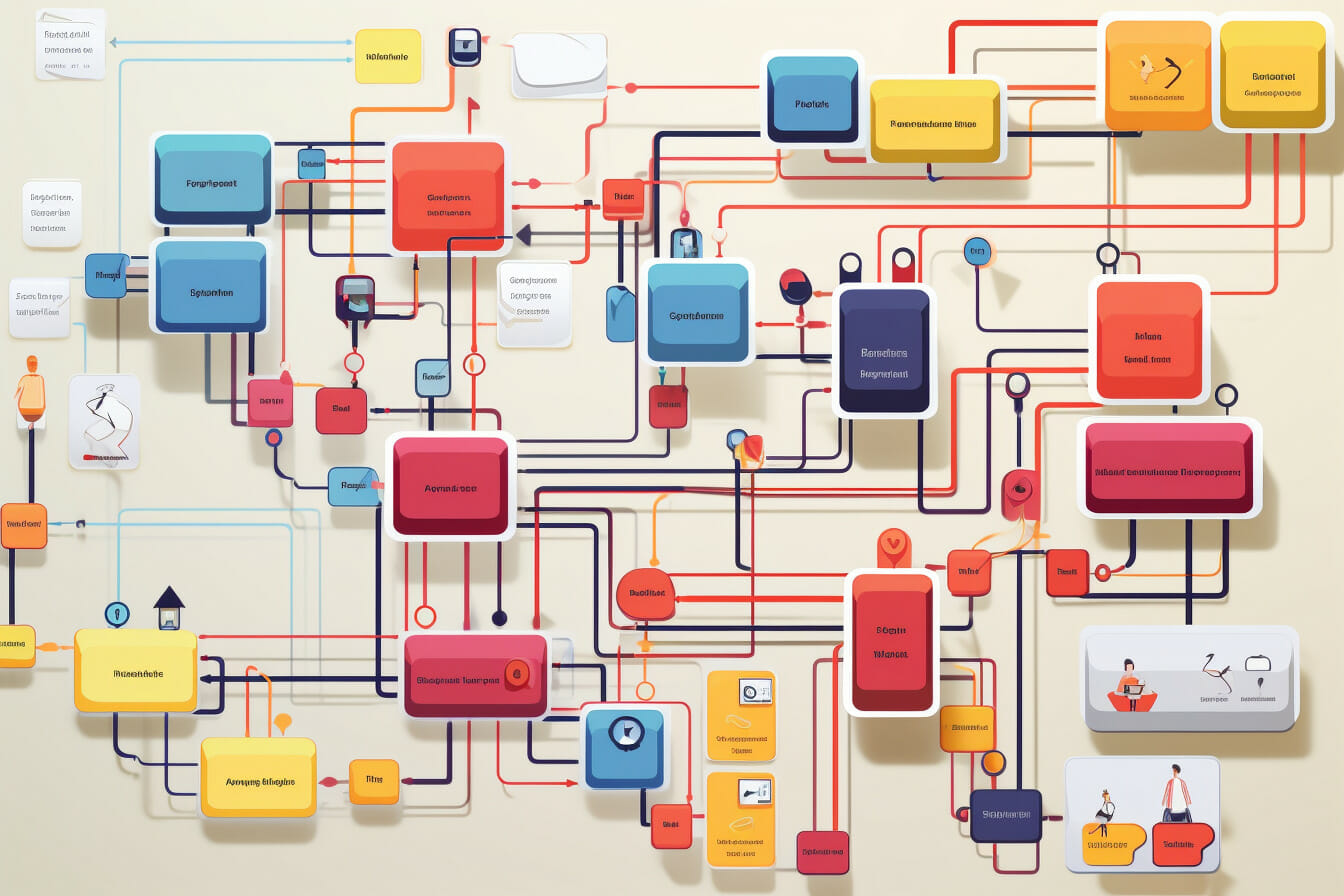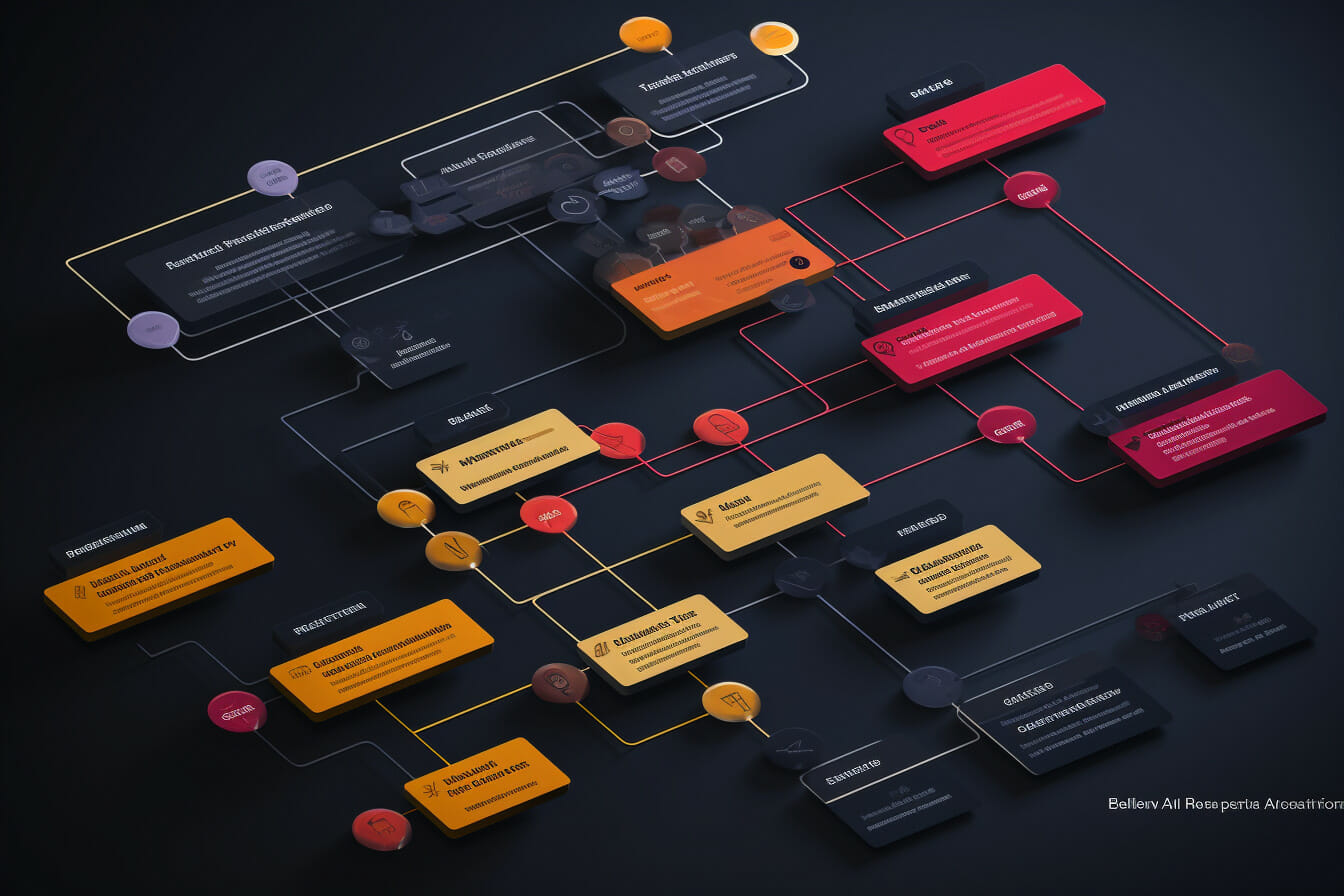Understanding the Hiring Process Flowchart
You’re looking to streamline your hiring process, aren’t you?
That’s where a hiring process flowchart comes in. It’s a tool that’ll transform your recruitment strategy, making it systematic and efficient.
In this article, we’ll walk you through the key components, guide you on creating your own, and highlight common mistakes to avoid.
Let’s revolutionize your hiring process together!
Table of Contents
Understanding the Importance of a Hiring Process Flowchart

Often, you’ll find that understanding the importance of a hiring process flowchart can dramatically improve your recruitment strategy. This tool visually represents each recruitment step, making it easier to identify potential bottlenecks or inefficiencies. You’ll be able to see where delays are occurring, where communication may be falling short, and where resources might be better allocated.
It’s not just about speed, though; it’s about quality. By streamlining the process, you’re also ensuring that you’re attracting and retaining suitable candidates. So don’t disregard the humble flowchart. It’s a simple tool, but its impact on your hiring process can be profound.
Knowing how to use it effectively will give you a competitive edge in the recruitment landscape.
Critical Components of an Effective Hiring Process Flowchart
You might think creating a hiring process flowchart is straightforward, but there’s more to it than just drawing boxes and arrows. This visual tool comprises critical components that ensure its effectiveness.
Job vacancy approval is the first stage, where you confirm if a position needs filling. The next is a job posting, where you advertise the vacancy widely.
Then comes the application review, where you sift through resumes and shortlist candidates. Fourth is the interview process, a critical stage where you interact with potential hires.
The job offer follows, where you negotiate and finalize terms. The final stage is onboarding, where you orient the new hire.
Each stage is crucial, so don’t overlook any!
Steps to Creating Your Hiring Process Flowchart

Starting with a clear understanding of the job vacancy and moving through each stage of the hiring process, you’ll need to create a systematic and detailed flowchart that accurately outlines your organization’s hiring process.
Begin by defining each step in the hiring process, from job posting to final decision.
Next, represent these steps visually, using boxes or circles, and connect them with arrows to indicate the flow of the process.
Include decision points where a ‘yes’ or ‘no’ outcome leads to different steps.
Ensure your flowchart is easy to follow, with a start and end point.
Finally, review and refine it, ensuring it’s accurate and precise.
Implementing the Hiring Process Flowchart in Your Recruitment Strategy
Incorporating a hiring process flowchart into your recruitment strategy isn’t just about visualizing the steps and optimizing efficiency and effectiveness.
It’s a tool that’ll help you streamline your hiring procedures, making them faster and more accurate. By laying out the recruitment workflow, you can spot bottlenecks or unnecessary steps, reducing time and resources wasted.
It also ensures everyone’s on the same page, minimizing misunderstandings and errors.
So, how do you implement it?
Start by mapping out your current process, then identify areas for improvement. Once you’ve designed your flowchart, make it accessible to everyone involved in the hiring process. Train them on it, and regularly review and update it as needed.
It’s simple, but it can make a huge difference.
Common Mistakes to Avoid When Utilizing a Hiring Process Flowchart

Despite its benefits, it’s easy to stumble into pitfalls when using a hiring process flowchart if you’re not careful.
The most common mistake is overlooking the importance of customization. A flowchart isn’t a one-size-fits-all tool. You must tailor it to your company’s needs, culture, and the specific role you’re hiring for.
Another error is neglecting to update the flowchart regularly. As your organization evolves, so should your hiring process. Failing to do so could lead to inefficiencies and misaligned hiring practices.
Finally, don’t rely solely on the flowchart. Human judgment and intuition, backed by the flowchart’s structure, make for the most effective hiring decisions.
Avoid these missteps to maximize your flowchart’s potential.
Frequently Asked Questions
How can a recruitment process flowchart be helpful?
A recruitment process flowchart helps clearly define and organize the hiring steps. It enables stakeholders to understand the process and identify any bottlenecks or areas for improvement.
How can a flowchart template help in creating a recruitment process flowchart?
A flowchart template provides a ready-made structure and format for creating a recruitment process flowchart. It saves time and effort by providing a starting point for customization.
Who is typically involved in the recruitment process flowchart?
The recruitment process flowchart typically involves stakeholders such as HR team members, hiring managers, interviewers, and other relevant personnel.
What tools can be used to create a recruitment process flowchart?
Flowcharters, PowerPoint, and other diagramming software can be used to create a recruitment process flowchart.
How can a recruitment process flowchart help in finding suitable candidates?
A recruitment process flowchart helps find suitable candidates by providing a systematic approach to attract, evaluate, and select potential candidates. It ensures that all necessary steps, such as job posting, resume screening, and interviews, are followed consistently.
What are the critical steps in a recruitment process flowchart?
The critical steps in a recruitment process flowchart may include creating a job description, posting job openings, sourcing potential candidates, screening resumes, conducting interviews, performing background checks, making a job offer, and onboarding the new employee.
How does a recruitment process flowchart ensure compliance?
A recruitment process flowchart ensures compliance by following all necessary steps and procedures, such as conducting fair and unbiased interviews, documenting qualified candidate evaluations, and adhering to legal requirements.
What is the role of human resources in the recruitment process?
Human resources play a vital role in the recruiting process. They are responsible for recruiting, posting job openings, screening resumes, conducting interviews, performing background checks, making job offers, and facilitating onboarding.
Can I edit the recruitment process flowchart template to fit my company’s needs?
You can edit the recruitment and selection process flowchart template to fit your company’s specific needs. You can customize it by adding or removing steps, altering the sequence of actions, or including specific organization requirements.
Conclusion
So, you’ve got the rundown on hiring process flowcharts. Remember, they’re essential for organizing your recruitment strategy, but only if carefully crafted and properly used. Avoid common pitfalls and ensure every key component is included.
Now, create your flowchart and see the difference it makes in recruiting. It’s all about streamlining and simplifying, making your recruitment journey smoother and more efficient.













